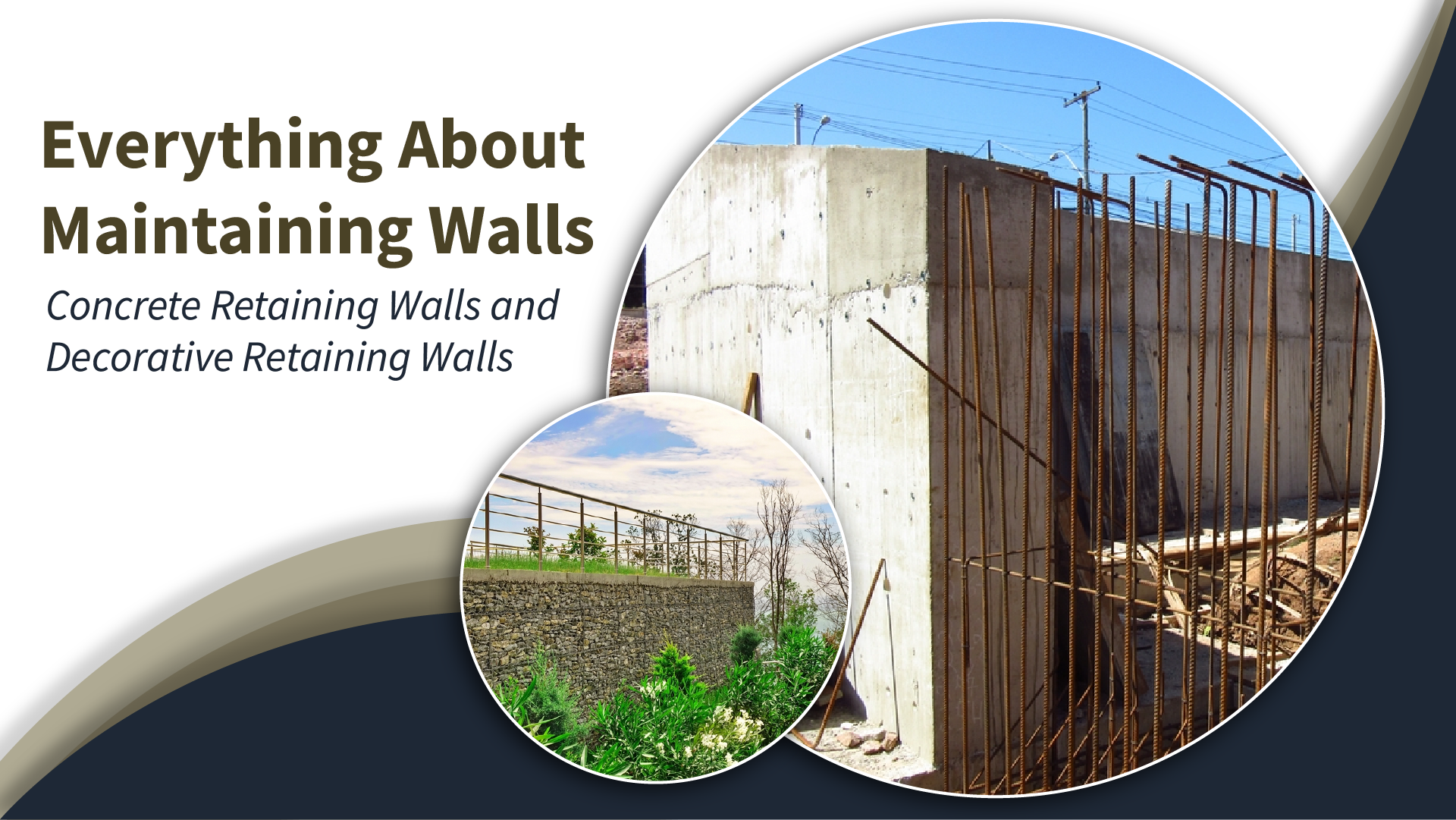Introduction to Retaining wall permit Washington DC
Initially, a retaining wall is a structure that keeps back, or “retains,” lateral faces of dirt, water, or other materials. Retaining walls are utilized to prevent erosion or collapse of the higher-level ground onto a certain building, structure, or general location. The earth that is retained is frequently described as backfill. The word backfill is likewise used as a verb to describe placing more dirt behind a maintaining wall to make the ground more level.
Retaining walls can be the response if you are blessed (or cursed) to a contoured lot. They can turn a high slope into a terraced lawn, creating a stair action result instead of a slope. Retaining walls can be constructed from several products utilizing various methods. There are several elements that affect which choice will be the very best option for each situation, including expense, the height of the wall, soil attributes, and groundwater conditions.
Usually, many municipalities need that any retaining wall over four feet in height be crafted or approved by a licensed engineer. It is essential to check local building codes before beginning any retaining wall projects, even if it is below 4 feet high. After all, retaining walls must be structurally sound prior to there is any thought of aesthetic appeal.
The retaining wall must be able to withstand the pressure applied by the backfill, also called lateral earth pressure. This lateral earth pressure is a majority of the force that the retaining wall will need to bear. Lateral earth pressure is figured out by studying the weight of the soil unit, slope of the soil, soil type (for plasticity and adhesion functions with clay soil types), and ground water levels.
Engineers do many calculations with these factors to determine what design to implement with the wall. To homeowners and contractors that do not wish to go through engineering steps, it is generally a good guideline to overdo it. Many structural techniques to develop retaining walls with keep earth, a minimum of briefly, with a height approximately four feet, are adequate, which is why most local building codes need engineering if the wall will be over 4 feet high.
Nevertheless, even methods that might seem appropriate for retaining earth can stop working if they are not developed appropriately. Sometimes, it is aspects listed below grade that can make (or break) a retaining wall. Issues including bowing, inclining, or splitting are evidence of maintaining wall failure due to the fact that it was not effective in keeping the dirt.
Cutting costs with a bad contractor, inadequate products, or disregarding the below grade elements can turn out to be more expensive gradually if replacement or repair work is needed typically or if collapse of earth triggers damage to neighboring structures. For example, erosion can cause foundation issues if dirt deteriorates from under the foundation. This is simply one example how a maintaining wall failure can cause pricey issues aside from the expense to repair or replace the retaining wall.
Another aspect that is often overlooked or ignored that can trigger failure of a retaining wall is drain. Insufficient drain of retaining walls can mean that water is trapped behind the wall, contributing to the weight that the wall must hold back.
Generally weep holes and/or drainage pipes are utilized to flush rain water and ground water from behind the wall. It is necessary that the drainage system, whatever it be, have a filter barrier to keep dirt from blocking the drain or weep hole.
Choices for Retaining Wall Products:
- Railroad Crossties: Railroad crossties, likewise shortened to railroad ties, can be used as a maintaining wall product; nevertheless, as with many every retaining wall product, it should be installed correctly in order to be a solution. For instance, most railway tie retaining walls will need a significant footer to tie the crossties to in order to keep the bottom from sliding out.
Also, there needs to be perpendicular members placed into the ground behind the wall to keep the wall from reversing. These members, called deadmen, must be at least 1.5 times as long as the wall is high and need to be positioned at minimum every 6 feet or so. Since railway ties are wood (even though they are treated most of the time), there is a risk that they might rot over time or go through termite invasion, which can result in a weak wall most likely to bulge or break. And, although there are areas for water to slowly permeate though, it is still an excellent concept to have a filtered drain or weep holes created into the wall.
- Treated Wood: Dealt with wood retaining walls use a number of the very same threats as keeping walls since over time it is susceptible to rot and termite problem. It is a labor extensive construction, however it is usually light-weight and decently strong if built properly. It is suggested to develop a concrete footer to attach the wall to in order to keep it from moving.
Construction usually needs a clear location to be backfilled after the wall is constructed, so it is not always the best product to utilize if you are changing an existing maintaining wall. This wall still needs weep holes or drains designed into the wall. Standing water behind the wood will just increase risk of rot.
- Concrete: Concrete is an excellent product to utilize for keeping walls. Naturally, there is a right and a wrong way to construct a concrete keeping wall, which makes picking your contractor a big job. There are various styles that can lead to a successful concrete retaining wall, however something is for sure: there requires to be a footer beneath the wall to ensure success. Concrete is one of the most resilient man-made products understood to guy.
A lot of concrete put today is crafted to last for over 50 years. Plus, concrete deals many ornamental choices too. Aside from a plain, white concrete retaining wall, you can also put a colored concrete retaining wall, stain a retaining wall after it has cured, pour into a patterned type, apply a vertical stamp material and pattern after put, and so on. Sealing the concrete wall can cause an easy-to-maintain surface area that washes without many dirt and grime.
- Blocks or Paver Stones: Engineered blocks that stack together to make a wall must be as easy as building with Legos, right? Nope. These retaining walls need to also have a significant footer in order to support not just the weight of the dirt however likewise the weight of the wall. These blocks can be a distinct appearance, however it might even be essential to position a concrete keeping wall behind the blocks if there immense lateral earth pressure. In such a case, the concrete would be the structural component, utilizing the blocks as a visual function.
- Rock or Brick: One of the preferred looks for a retaining wall is natural stone or brick. These products typically look more permanent and traditionally sophisticated. Nevertheless, just as we have seen with the other products, it is essential to have a concrete footer listed below grade to bring the weight and make sure success of the retaining wall. Like architectural blocks or paver systems, it may be required to back a masonry retaining wall with a concrete maintaining wall for structural support.


2 Comments
foundation Repair Expert Responses Your Questions
May 15, 2023[…] Q: How do you repair a moving retaining wall in Washington DC or Do we need retaining wall permit in Washington DC? […]
Qualities of A Professional Retaining Wall Contractor
May 19, 2023[…] it pertains to discovering whether your design is flexible to regional guidelines as well as for retaining wall permits in Washington, DC. Precast blocks, wood, and natural stone are among the parts typically used to establish a retainer […]